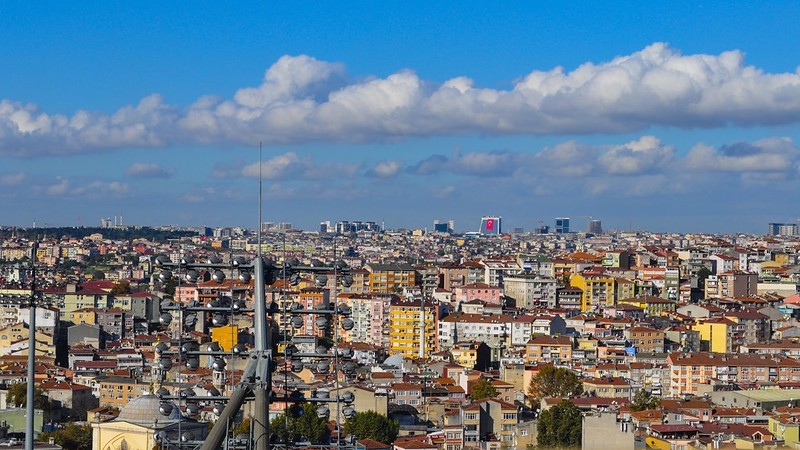
Risk communication in disasters aims to prevent and mitigate harm from disasters, prepare the population before a disaster, disseminate information during disasters and aid subsequent recovery. But despite a wealth of scientific information about threats, exposure, and vulnerability, most at-risk communities remain chronically ill-prepared. Therefore, our communications need to become far more effective if they are to genuinely reduce disaster risk.
Most disaster risk communication is expert-led and top-down, in which risk authorities emphasize awareness-raising through public education. But the 2015 Sendai Framework for Disaster Risk Reduction promotes a bottom-up, people-centred approach that embraces local and traditional knowledge and prioritises the active engagement and participation of at-risk publics. Therefore risk authorities need to increasingly focus their communications on the ‘first mile’ – getting meaningful information to those living in disaster-prone environments in order to motivate preparedness, save lives and bolster resilience.
With that grand challenge in mind, across the Tomorrow’s Cities research network, and specifically within the context of the Istanbul multi-hazard threat, there are three critical questions to confront:
1 - How can we be better communications?
Risk communication in disasters has historically been a one-way transfer of information from authorities to the public, rather than an interactive flow of information. Typically, this is done by public education campaigns using print and broadcast media. So, to better understand how to get their technical messages across, scientists and engineers need to appreciate how journalists and the news media work, particularly in crisis situations. Improving the ‘media literacy’ of technical experts can be achieved through media and communication training workshops, provided either by institutional or organizational press teams or outside media groups such as BBC Media Action. Such training provides practical experience in ‘framing’ complex and contested issues in more appealing ways, and using journalistic devices of storytelling, narrative and visual imagery to engage hard-to-reach, non-technical audiences.
But the media landscape itself is rapidly transforming. Today, web- and mobile-based technologies offer new and far-reaching means to disseminate hazard warnings and to inform communities on how to prepare for or cope with extreme events. New channels of popular engagement are opening up. Digital storytelling and animation offer fresh ways to convey enduring threats, such as the next Istanbul earthquake.
Looking ahead, virtual immersive environments, gaming engines, and online scenario-based simulations offer the promise of exciting new instructional tools. It remains uncertain, however, whether this emergent media is more effective than traditional media for communicating DRR. Therefore, evaluating innovative immersive communication technologies will be an important element of the Tomorrow’s Istanbul risk communication research programme.
2 - How can we better sense and respond to what people need?
Communication is not just an art, it’s also a science – one built on decades of empirical social science about how people think and behave. We know that individuals and groups can be motivated to act by communications that strengthen their knowledge and their sense of personal and collective action (efficacy) but can be demotivated by overwhelming feelings of fatalism and fear. People take preparedness action when they know what to do, think it will work, and see others like them taking action. Equally there are deep-set cognitive, social and cultural biases that inhibit us – experts and non-experts alike – from rationally responding to perceived hazard information. Typically, people respond less to ‘matters of fact’ and more to ‘matters of concern’, so sensing what those human concerns are is essential element in risk communications.
Understanding risk psychology, sociology and culture in the context of Istanbul will be critical to developing more appropriate, locally-specific models for what motivates or inhibits behavioural change for disaster preparedness. Much can be learned from allied fields, notably public community health, about how complex risk messages can be conveyed to different at-risk groups. The goal is to establish a more robust empirical basis for authorities and disaster agencies to develop effective ‘actionable risk’ communication strategies.
3 - How can we better engage with communities at risk?
If a disaster risk to a community exists, then the community deserves to be informed. The 2015 Sendai Framework promotes such community-centred DRR communications but this new approach raises important questions. How do local, grassroots initiatives map on to and integrate with existing national and regional top-down interventions? What modes of new participatory, community-centred risk communications are most effective? How do we develop risk dialogues with the most marginalized and hardest-to-reach groups? How might participatory, community-based practices be augmented with web-based and mobile technologies?
Combining stakeholder mapping with a more flexible communication toolkit aims to allow the Tomorrow’s Istanbul research team to target their specialist technical know-how more effectively at the neighbourhood level through carefully designed, culturally-tuned and locally-specific risk interventions. The ultimate challenge will be evaluating the efficacy of these actionable risk interventions, within the city and across the disaster cycle.
Click here to find out more about Tomorrow's Istanbul's work